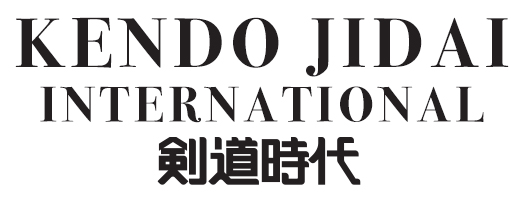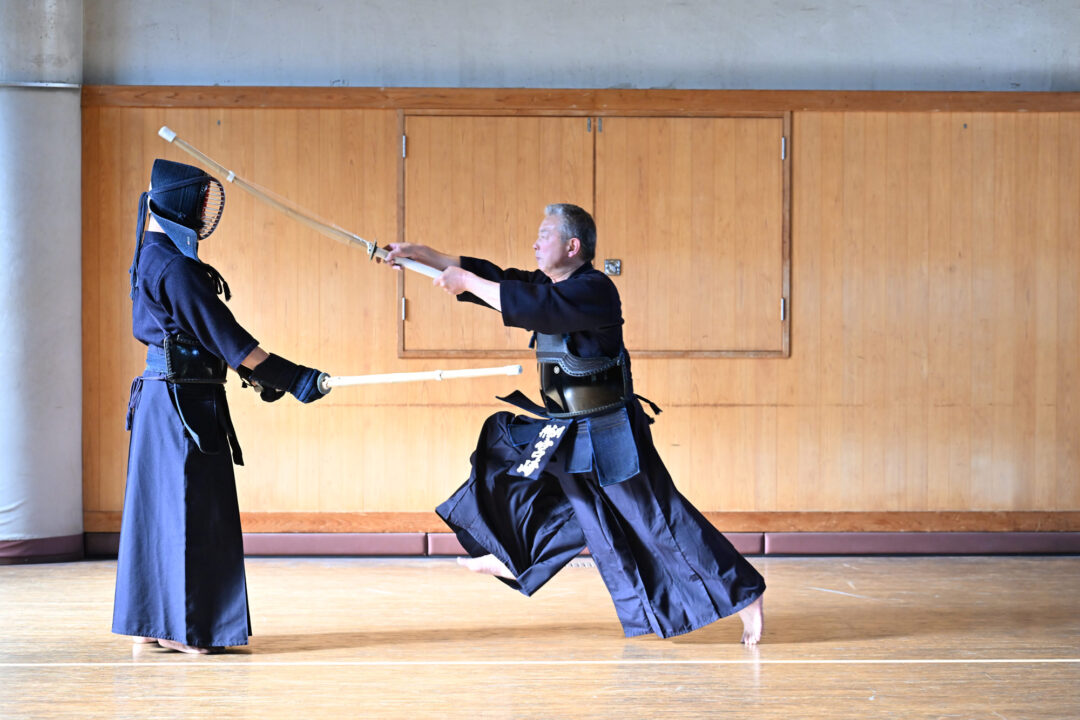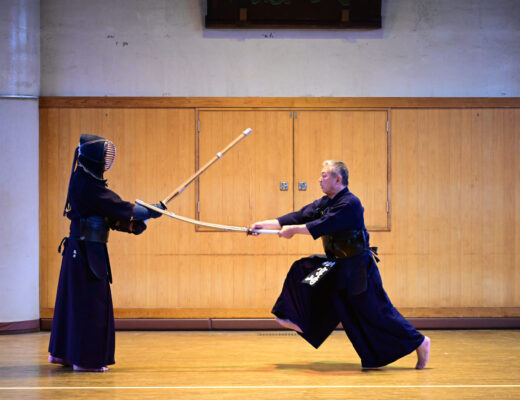KENDOJIDAI 2025.8
Photography: Nishiguchi Kunihiko
*Unauthorized reproduction or use of any images in this article is strictly prohibited.
At the All-Japan Invitational Kendo 8th Dan Championship held in April, Miyazaki Fumihiro, Kyōshi, achieved third place. His effortless and free-flowing style of Kendo thrilled the audience. Why is it essential to acquire the ability to strike in one breath? We asked Kyōshi Miyazaki, a seasoned veteran with countless battles to his name.
Miyazaki Fumihiro

In the Kendo Seminar Materials published by the All Japan Kendo Federation, the “Key Points” of instructional seminars state:
“From Issoku-ittō-no-maai, the central task is to acquire the skill of striking correctly in one breath, while also striving to learn rational applied techniques according to each practitioner’s level of ability.”
To strike correctly in one breath, one must acquire Shinai handling free from unnecessary tension. But why is striking in one breath so important in the first place? It is because valid strikes in Kendo are, in principle, those delivered in one breath.
Especially for those aiming at high ranks such as 6th Dan and above, it is essential to acquire one of the key elements of a valid strike—Sae (sharpness). Sae is produced at the moment of impact by the instantaneous tightening of the Tenouchi. Though difficult to express in words, when the right and left hands work in harmony, it produces a strike that is universally recognized as Ippon.
To acquire this kind of strike, there is no other way but to train—and it must be done by constantly seeking correctness in the fundamentals such as Suburi, Uchi-komi, and Kiri-kaeshi.
Although correctness is an abstract expression, I believe it is essential always to be mindful of whether one’s Kendo aligns with what is described in the official teaching manuals.
To acquire strikes in one breath, it ultimately comes down to maintaining correct Kamae and correct Shinai handling. But one point I always emphasize is to operate the Shinai with awareness of the left hand. When swinging the Shinai with the left hand in mind, the movement naturally follows the order of shoulder, elbow, and wrist, leading to strikes with Sae.
On the other hand, when swinging primarily with the right hand, the movement tends to rely only on the right hand and elbow, leaving the shoulder unused. At first glance it may appear fast, but in reality it makes it difficult to produce techniques smoothly in response to opportunities.
For those aiming at high ranks such as 6th Dan and above, it is essential to embody Kendo appropriate for that level. Since one must acquire the fundamentals at a higher standard, mastering left-hand–led Shinai control is indispensable.
In Chūdan-no-kamae, the standard Kamae in Kendo, the right hand and right foot are placed forward, which easily results in excess tension on the right side of the body. In matches or examinations, the tension of the moment often amplifies this tendency, preventing accurate Shinai handling. For this reason, it is vital in daily practice to constantly check whether one is executing techniques smoothly from correct Shinai control.
Swinging the Shinai with the Left Fist on the Center Line
The rest of this article is only available for Kendo Jidai International subscribers!



